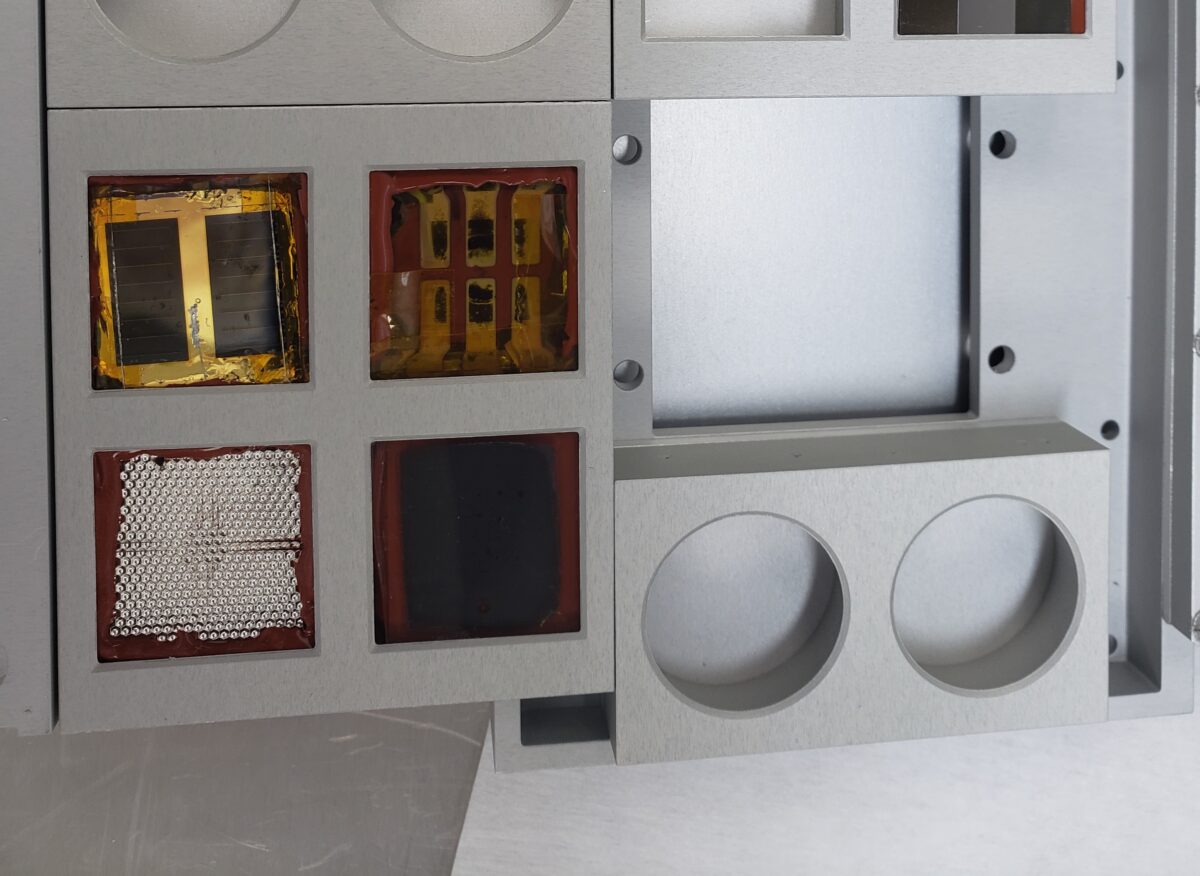NASA has revealed the results of an experiment it conducted to assess the performance and durability of perovskite solar cells on the International Space Station.
The agency said that it tested a perovskite absorber over a 10-month period in order to assess its resistance to vacuum, extreme temperatures, radiation, and light stressors simultaneously.
“There is no ground analog, no machine that will do all of those crazy things to it at the same time quite like the International Space Station,” said researcher Lyndsey McMillon-Brown.
The scientists attached the film to the outer side of the space station and exposed it to space conditions from March 2020 to January 2021. It then returned to NASA's laboratories on Earth and its status was compared to that of a reference device on the ground. The research group said the space-traveling perovskite cell's sunlight-absorbing qualities were surprisingly restored when hit by solar light on Earth, while the reference showed stronger degradation when exposed to the same conditions.
“The perovskite film was still dark black after spending 10 months on the International Space Station, proving her team’s innovative solar cell material is suitable for possible use on future space missions,” said McMillon-Brown. “We don’t know exactly what about the space environment gave our film this superpower.”
Looking forward, the NASA team said that it will try to find out which specific parts of the space environment transformed the perovskite.
“Not only do they survive, but in some ways, they thrived. I love thinking of the applications of our research and that we’re going to be able to meet the power needs of missions that are not feasible with current solar technologies,” said McMillon-Brown.
The results confirmed earlier research showing that the lack of moisture and oxygen outside of Earth’s atmosphere is actually beneficial to perovskite cells, and that the cells could be more suitable for operation in space without any major changes. The group said that there is huge potential for improvements in terms of stability and lifetime, and that proving the cell for long-term operation in space will be the next research step.
This content is protected by copyright and may not be reused. If you want to cooperate with us and would like to reuse some of our content, please contact: editors@pv-magazine.com.



I was under the impression that oxygen was a factor in the degradation of perskovite solar cells, in space/vacuum not much of an issue.
It has been known for at least 10 years, that chemistry done in space can adapt atoms to reshape/reorient while in a low gravity environment. Once returned from space, atoms are and remain in a different configuration due to this reorientation resulting from exposures to both low gravity and perhaps vacuum. While there are sure benefits from a non-oxygen, non-nitrogen environment, it is the low gravity that allows atoms to reconfigure and remain in such configurations once returned to higher gravity states. While the perovskite items the crew tested, were not made in space, low gravity exposure did occur and atoms were reconfigured into their best orientation while in low gravity over 10 months. It’s my conjecture that time in space allowed this reorientation of atoms and better absorption of light was merely a byproduct of a natural restructuring of the exposed matrix of atoms within the perovskite film. This reorientation under low gravity of atoms also may impact organic chemistry as well. We already know that certain metallic compounds and elements can be reconfigured better under molten chemistry conditions in such a way that they are stronger or resilient when formulated under low gravity conditions an function differently once returned to Earth. Few items remain unchanged by low gravity exposures of over several months. Perhaps, space and low gravity long term exposure reorients all materials? It’s worth experimenting to uncover these characteristics of atomic rearrangement don’t you agree?
Whoa, if i understand you correclty, we could improve perovskite based solar panels by manufacturing in space, waiting a bit then bringing them down for use?
If cost wasnt a factor ofcourse….